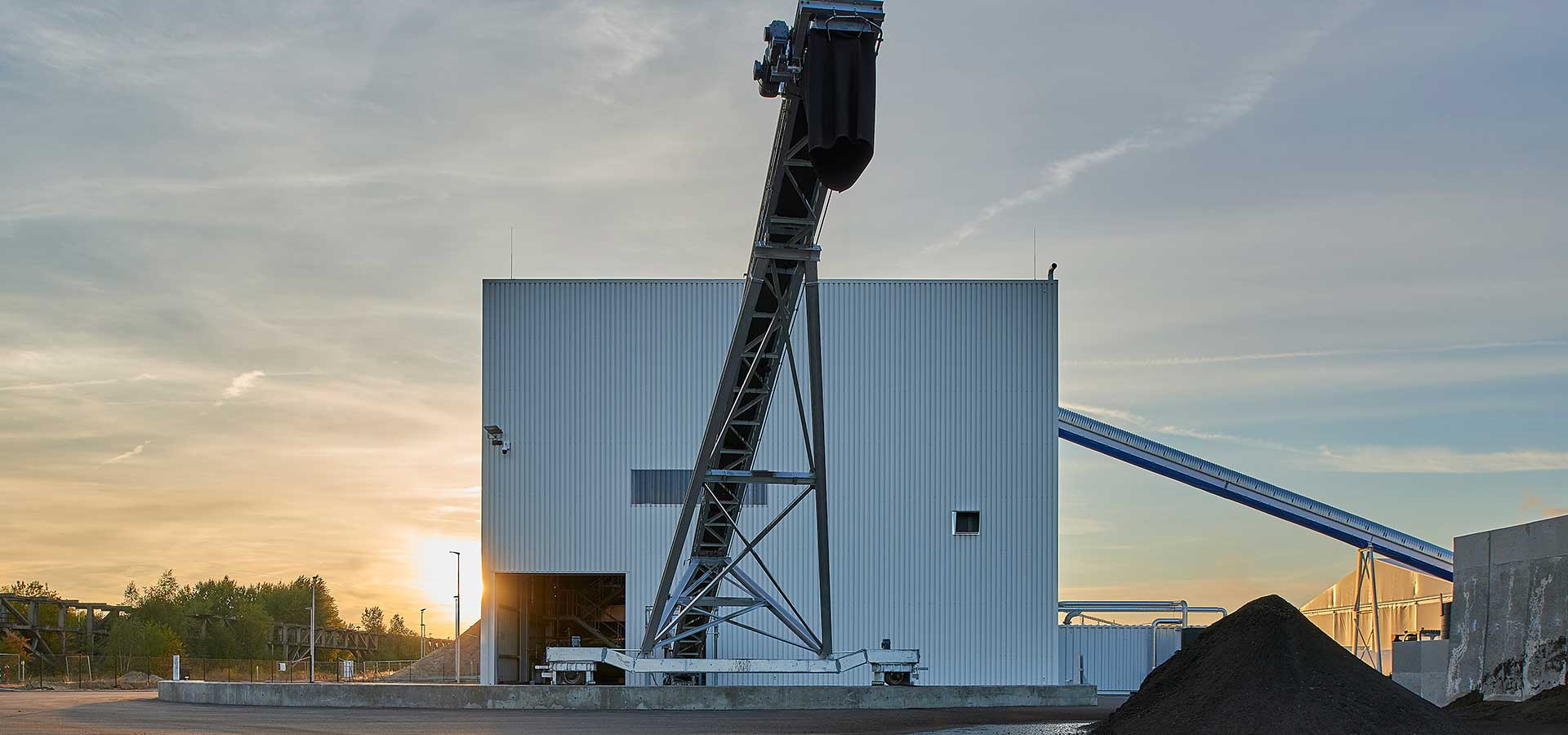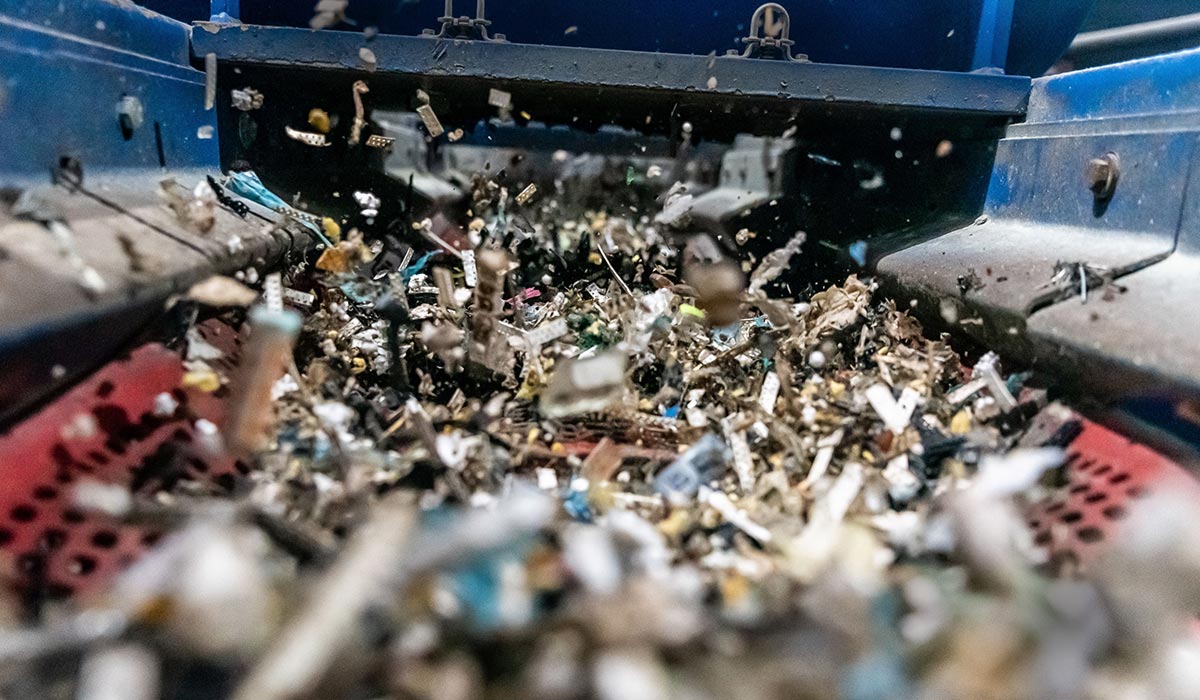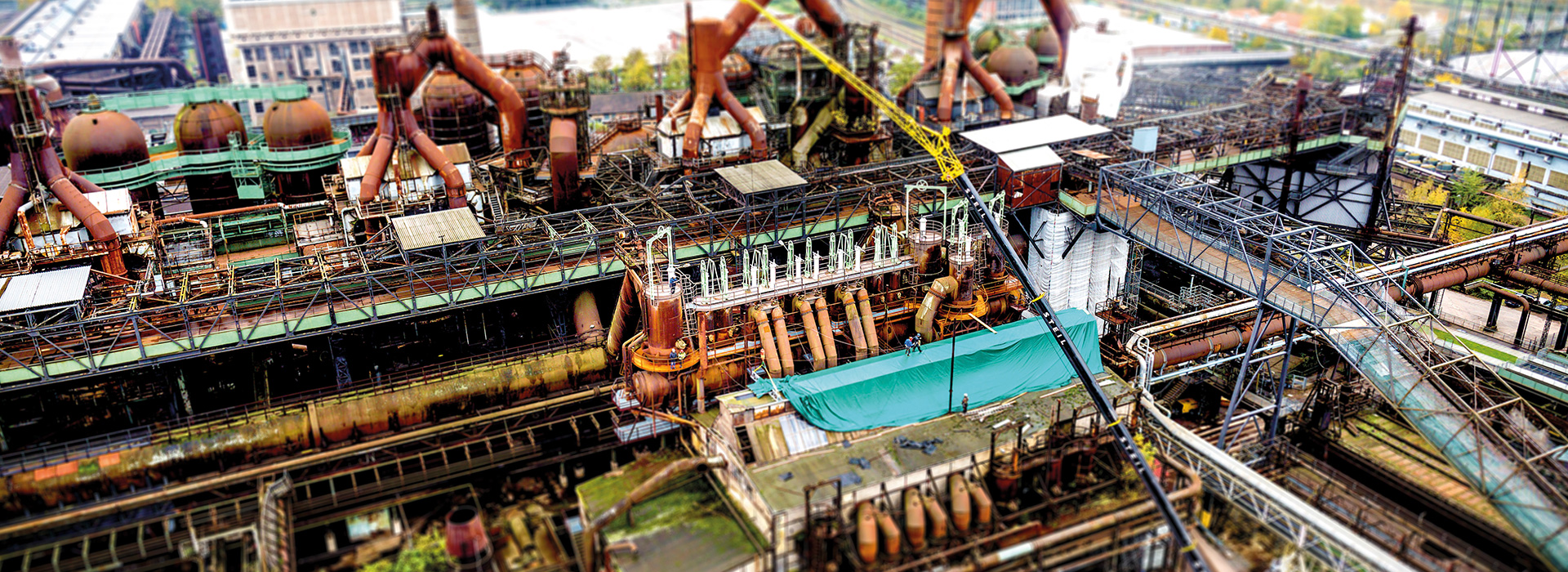
Industrial cleaning 4.0:
Tank cleaning by robot and product recycling with innovative techniques
Teutschenthal. A refinery naturally also has an enormous tank farm. Crude oil is stored here and processed into a wide variety of products - including diesel, gasoline or kerosene. As part of maintenance measures, such tanks have to be emptied and cleaned at regular intervals so that they can be refilled later. When tanks are emptied, by-products are also produced, some of which contain watery components that need to be recycled again. This is where the innovative technology from Lobbe and several partner companies comes into play. The product residues are not only to be automatically removed from the tank, but also separated into the individual phases by decanter and each transferred to a recycling process. For the first time, Lobbe is using a combination of its own tank robot, which removes the solid and sludge-like product residues from the tank, and a complex modular decanter system. The oil components recovered from this process can be fed back into the production process and reused. A comprehensive project with a lot of innovation.
Robot suitable for hazardous areas
In addition to the actual robot, a mobile control unit is set up for the control system and other necessary equipment such as gas scrubbers, suction vehicles and hydraulic drives are installed. "The robot positions the suction hoses in the tank, which are connected to the suction vehicle," explains operations manager Stefan Lukaschek. Because the robot's drive is hydraulic, it can be used in hazardous areas. The robot itself is so small that it can enter the tank through a manhole that is at least 60 centimeters in diameter. For optimum operation, an area of around two by two meters at the entrance is cleaned in advance using hot water and a tank washing head and freed of product sludge.

The robot weighs about 500 kilograms and the chains of the drive are magnetic. This is how the robot holds on to the metallic tank bottom. Once the robot is inside the tank, the three LED-lit cameras are activated. The suction work is monitored and controlled from the control center. "Using a joystick, the direction of travel and speed can be adjusted. The controller sees an overview image on the monitor as well as the front and rear ends of the robot. This also prevents loops from forming in the hoses. The robot now suctions off the muddy product residues in a fan-shaped pattern, which are picked up by a suction cart," says Stefan Lukaschek.
Automation of processes and recycling of raw materials
The task here is complex. On the one hand, it requires cleaning in a potentially explosive atmosphere, and on the other, treatment and separation of the residual substances. First, the gaseous atmosphere in the tank is removed. Only then can the manhole be opened. From there, an airlock is set up in the outer area through which the robot can enter the tank.
The automation of processes relieves the employees. In comparison: manual cleaning requires working with external breathing air supply. In addition, the teams have to be changed regularly due to the high level of physical exertion and for reasons of occupational safety. On the one hand, this is only possible with a high level of personnel deployment; on the other hand, the physical strain also increases the susceptibility to errors. Accordingly, the use of a robot contributes to greater occupational safety; also because skilled workers are no longer directly involved in the hazardous area. "As a rule, the installation of automated cleaning equipment is more time-consuming than the preparation of manual cleaning. Overall, automated cleaning of large and complex plant components is more effective, safer and less prone to errors. Unmanned tank cleaning is also more effective: the robot does not get tired and can work 24 hours a day, 7 days a week," summarizes project manager Veit Schumann. In the case of manual cleaning, which is carried out independently of the outside air and with chemical protection suits, the skilled workers have to take turns at the prescribed, relatively short intervals. Multi-shift operation would put a great strain on personnel capacities.
For further processing of the extracted product sludge, the material is homogenized in a receiver and then pumped into a decanter for phase separation. Solids are transferred for disposal, the water phase goes to local wastewater treatment, and the oil phase is returned to the production process for reprocessing. This results in a reduction of waste volumes and maximization of raw material utilization.
Decanter
Here, Lobbe is working together with the company Separo, which specializes in handling liquid residues from gas and oil production and geothermal energy. The separation of liquid phases to recover the oil phase in particular as a valuable raw material forms a core part of this project. Unlike the decanting of wine, a centrifuge is used here. It is based on the principle also used in the spin cycle of a washing machine: the liquid emerges from a sieve tank, and the solid and heavier fractions are pressed to the edge of the rotating drum. Since there are many kerosenes in the corresponding tank in this project, which become solid when cooled, the semi-liquid residue is first heated, then centrifuged. The solid residues pass through a chute into a separate collecting vessel. The liquid residues must now be decanted. To do this, the liquid must first rest until the oil-containing phase has settled at the top and the aqueous phase at the bottom, and only then is decanted. Total then uses the oily phase again as a recycling product in the manufacturing process.

